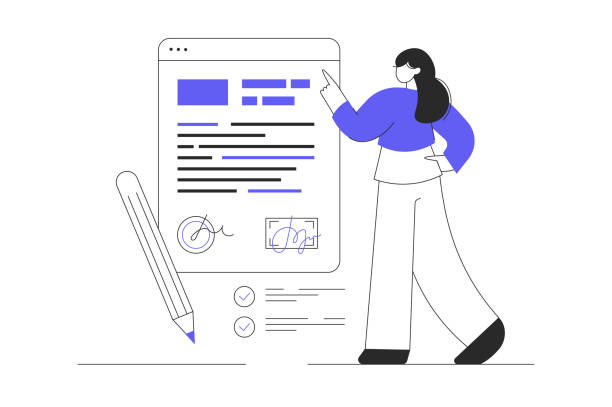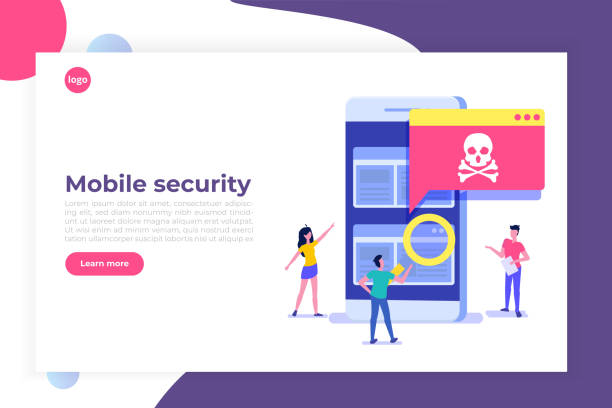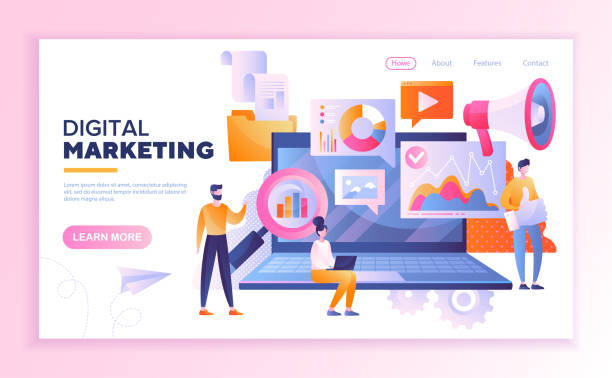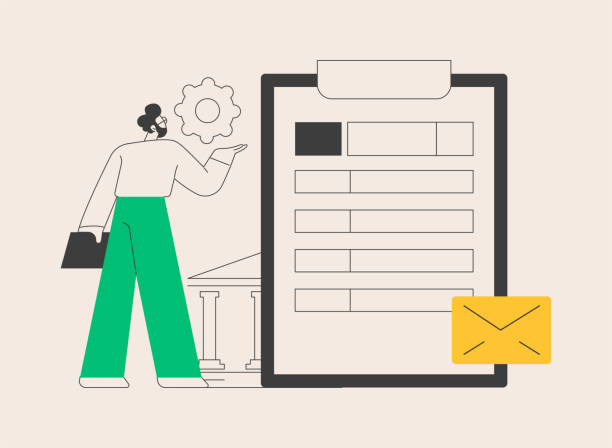An Introduction to User-Friendly Website Design: Why Is It Important?

In today’s digital world, merely having a website is not enough; what matters is how that website delivers the user experience.
#UserFriendlyWebsiteDesign is no longer a luxury option but a vital necessity for any online business.
This concept goes beyond visual aesthetics, meaning creating an environment where users can easily interact, find the information they need, and perform their tasks simply.
Imagine entering a store where the shelves are disorganized, products are hard to find, and salespeople are unresponsive; would you return there? Your website is the same.
If your site’s #UserExperience is poor, visitors will quickly leave and go to your competitors.
A well-designed and user-friendly website not only increases conversion rates but also builds trust and loyalty among customers.
This section will help you understand why investing in user-friendly website design is crucial for your long-term success.
With increasing online competition, businesses must ensure their websites are not only visually appealing but also accessible and easy to use for all users, regardless of their abilities or the devices they use.
The primary goal of user-friendly website design is to reduce friction in user interactions with the site, meaning users can achieve their goals without any obstacles.
This includes easy navigation, fast loading times, and clear, understandable content.
A well-designed website encourages users to spend more time on the site, view more pages, and ultimately perform your desired actions, whether it’s purchasing a product, filling out a contact form, or simply gathering information.
This is the foundation of any successful digital strategy.
Did you know that your company’s website is the first point of contact for 75% of potential customers?
Your website is the face of your brand. With **Rasaweb**’s corporate website design services, build an online presence that earns customer trust.
✅ Create a professional and lasting image for your brand
✅ Attract target customers and increase online credibility
⚡ Get a free consultation from **Rasaweb** experts!
Key Principles of User-Friendly Website Design: Navigation and Responsiveness

To have a #UserFriendlyWebsite, certain principles must be followed.
Two of the most important of these principles are easy Navigation and Responsiveness.
Navigation refers to how users find their way around your website.
Are the menus clear and logical? Can users easily go from one page to another and find what they are looking for? Complex and disorganized navigation can quickly confuse users and make them leave the site.
The best approach is to use a logical hierarchy in menus, clear Call-to-Action (CTA) buttons, and include a search bar for quick content access.
On the other hand, responsiveness means your website’s ability to automatically adapt to different screen sizes, from desktops to tablets and mobile phones.
In today’s era, where most users access the internet via mobile devices, #ResponsiveDesign is not just a desirable feature but a necessity.
If your website does not display correctly on smartphones, users will be forced to zoom in or scroll horizontally, leading to a very unpleasant experience.
A website that is fully optimized for mobile not only improves the user experience but also positively impacts search engine rankings.
These factors together form the backbone of a successful #UserFriendlyWebsiteDesign and help visitors achieve their goals with minimal effort and have a positive experience on your site.
Did you know that Google ranks non-responsive websites lower in its search results? This is a strong reason to invest in this area.
The Role of User Interface (UI) and User Experience (UX) in User-Friendly Website Design

You may have often heard the terms #UserInterface (UI) and #UserExperience (UX).
These two concepts, although related, have key differences that are essential to understand for anyone pursuing #UserFriendlyWebsiteDesign.
UI refers to the visual and interactive aspects of a website; that is, everything the user sees and interacts with, such as buttons, colors, fonts, images, and forms.
The goal of UI is for the website to be attractive, beautiful, and visually pleasing.
A good user interface should be intuitive and understandable so that the user can use it without much thought.
But UX, or User Experience, goes beyond appearance and refers to the user’s overall feeling when interacting with a product or service.
Is the site easy to use? Does the user achieve their goal? Do they enjoy the experience? UX includes all stages from the moment a user enters the site until they leave, and addresses how they feel throughout this process.
For example, if a website is beautiful (good UI) but the user cannot find the desired product or the purchasing process is complex (poor UX), they will ultimately have an unpleasant experience.
For a truly #UserFriendlyWebsiteDesign, both a strong UI and excellent UX are necessary.
UI helps with the look and feel, while UX ensures that the user’s journey is meaningful and unobstructed.
These two work together to create an overall positive user experience.
Their difference can be summarized as UI dealing with “how things look” and UX dealing with “how things work and feel”.
This difference is better illustrated in the table below:
| Feature | User Interface (UI) | User Experience (UX) |
|---|---|---|
| Main Focus | Product’s appearance and feel | User’s feeling while using the product |
| Elements | Colors, fonts, buttons, icons, images | Information architecture, interactions, user journey, research |
| Ultimate Goal | Creating an attractive and visual user interface | Creating a positive and efficient user experience |
| Practical Example | Beautiful button layout in a form | Ease of filling and submitting that form |
The Importance of Responsive and Mobile-First Design in User-Friendly Website Design

Today, #MobileFirstDesign is no longer just a trend but an industry standard for any #UserFriendlyWebsiteDesign.
Given that most internet users access websites via mobile devices, neglecting this aspect can lead to losing a large portion of the audience.
Responsive design means that your website automatically responsive web design adjusts to the screen size of the user’s device, from a large desktop monitor to a small smartphone.
This ensures that users have a similar visual and functional experience regardless of the device type.
The importance of this issue is not limited to user experience alone.
Search engines like Google rank mobile-optimized websites higher in their mobile search results because they offer a better user experience.
This means that a non-responsive website not only loses users but also has less chance of being seen in organic searches.
The “mobile-first” approach means that designers first consider how the website will be displayed on mobile devices and then develop it for larger screens.
This method ensures that the core content and functionality of the website are easily accessible even on the smallest screen.
This is a paradigm shift in design that focuses on simplicity and efficiency in limited environments.
A website that is well-optimized for mobile not only loads faster but is also easier to navigate and generally provides a much better user experience, which is a key factor in the success of #UserFriendlyWebsiteDesign.
How much does losing business leads due to an unprofessional website cost you? Solve this problem forever with professional corporate website design by Rasaweb!
✅ Increase credibility and trust of potential customers
✅ Easier attraction of new business leads
⚡ Get a free consultation right now!
Content Strategy for User Engagement: Readable and Engaging Content

Content is king, but not just any content; good and #UserFriendly content is king.
Content strategy in #UserFriendlyWebsiteDesign goes far beyond simply writing text.
It includes how information is presented, its readability, and its power to attract and retain the audience.
Your content should not only be informative but also structured in a way that is easily scannable and digestible.
Using clear headings, short paragraphs, bulleted lists, and relevant images can help improve readability.
A long, uninterrupted block of text tires users and causes them to leave your site.
In addition to readability, your content must be engaging and relevant to your audience’s needs.
Does your content answer users’ questions? Does it solve their problems? Does it add value for them? Using simple and understandable language, avoiding complex technical jargon (unless your audience is an expert), and adding visual elements such as infographics and videos can increase the appeal of your content.
Clear and attractive Call-to-Action (CTA) buttons also play a vital role in guiding users towards desired actions.
A #StrongContentStrategy not only helps increase user engagement but also enhances your credibility as a reliable source of information.
This is especially important for #SEO and attracting new visitors through search engines.
Your content should not only be informative but also encourage users to continue exploring your site and guide them toward conversion (sales, sign-ups, etc.).
Optimizing Speed and Performance: Impact on User Experience and SEO

Website loading speed is one of the most important factors in #UserFriendlyWebsiteDesign that is often overlooked.
In today’s fast-paced world, users expect websites to load within a few seconds.
Any delay, however short, can lead to losing visitors.
Research has shown that even a one-second delay in page loading can reduce conversion rates by up to 7%.
This means that a slow website directly impacts your revenue.
Speed optimization includes compressing images, using caching, minimizing JavaScript and CSS code, and choosing a reliable hosting provider.
In addition to user experience, website speed also has a significant impact on SEO.
Search engines like Google rank faster websites higher in their search results because they provide a better user experience.
Optimizing website performance not only means faster page loading but also quick responsiveness to user interactions and providing a smooth and uninterrupted experience.
This is a vital investment for any website seeking long-term success and attracting and retaining users.
A fast website makes users happy, and this happiness contributes to their loyalty and the growth of your business.
Your website’s speed is an integral part of #UserFriendlyWebsiteDesign and should not be underestimated.
Website Accessibility: Designing for All Users

#WebAccessibility means designing websites in such a way that people with disabilities can fully access and use them.
This includes individuals with visual, hearing, motor, or cognitive impairments.
A truly #UserFriendlyWebsiteDesign is accessible to all users, regardless of their abilities.
Why is this so important? Firstly, from an ethical and social perspective, everyone should have the right to access online information and services.
Secondly, legally, many countries have enacted laws regarding website accessibility (such as the ADA in the US or international WCAG).
Non-compliance with these laws can lead to heavy penalties.
Thirdly, designing for accessibility often benefits all users.
For example, Alt Text for images is not only useful for visually impaired individuals who use screen readers but also aids SEO.
Or proper color contrast, which is essential for people with visual impairments, increases readability for everyone.
Ensuring your website is navigable using screen readers, your forms are properly labeled, and your videos have captions are just a few examples of actions you can take.
This not only covers a larger community of users but also creates a positive brand image that shows you care about all your users.
Ultimately, accessibility is a key element in building a #UserFriendly and comprehensive website design.
| Item | Description | Purpose |
|---|---|---|
| Alt Text for Images | Textual descriptions for images, read by screen readers. | Assists visually impaired users and improves SEO. |
| Proper Color Contrast | Sufficient difference between text and background colors. | Better readability for visually impaired people and general users. |
| Keyboard Navigation | Ability to navigate the entire website using only the keyboard. | For individuals with motor limitations. |
| Captions and Transcripts for Audio/Video Content | Providing text for dialogues and sounds in videos and audio files. | For people with hearing impairments and in noisy environments. |
| Accessible Forms | Proper labeling of form fields and providing clear error messages. | Helps all users complete forms. |
User Testing and Feedback Integration: A Tool for Continuous Improvement

You might think that by adhering to all the mentioned principles, your job is done, but #UserFriendlyWebsiteDesign is an ongoing process.
To ensure your website is truly user-friendly, you need #UserTesting and feedback collection.
You might think you’ve designed the best navigation path, but only real users can confirm whether this path is logical and intuitive for them.
User testing involves observing real people as they use your website while performing specific tasks.
This can reveal pain points, confusions, or areas of the site that need improvement.
In addition to user tests, using analytical tools like Google Analytics to track user behavior is also crucial.
Which pages receive the most visits? Where do users exit? How long do they spend on each page? This data can provide valuable insights.
Also, running A/B tests, where you show two different versions of a page or element to different user groups and compare their performance, can help you identify the best design.
Collecting feedback through surveys, contact forms, and even social media can also help you gain different perspectives on your user experience.
Integrating this feedback and iterating on the design is key to continuous improvement and maintaining a dynamic and effective #UserFriendlyWebsiteDesign.
This continuous cycle of improvement ensures that your website always meets the needs of its users.
Are you concerned about your e-commerce site’s low conversion rate and not achieving your desired sales?
Rasaweb is your specialized solution for a successful e-commerce website.
✅ Significant increase in conversion rates and sales
✅ Professional and user-friendly design to satisfy customers
⚡ Ready for a transformation in online sales? Get a free consultation!
Common Mistakes in User-Friendly Website Design and How to Avoid Them

On the path to achieving excellent #UserFriendlyWebsiteDesign, designers and developers often make mistakes that can harm the user experience.
Awareness of these common mistakes is the first step to avoiding them.
One of the biggest mistakes is excessive complexity.
Sometimes, designers try to fit everything onto one page or use too many animations and effects, which leads to clutter and user confusion.
Simplicity and minimalism are often the best approaches for clarity and ease of use.
Another mistake is neglecting responsiveness testing.
As previously mentioned, lack of optimization for mobile devices can be disastrous.
Many designers work on desktops and forget how the site looks on a smaller screen.
Also, the absence of clear Call-to-Action (CTA) or placing them in inappropriate locations makes users unsure of what to do.
Unreadable content or the use of strange fonts can also drive users away.
Other common mistakes include long loading times, intrusive pop-ups, and insufficient contact information.
Each of these can easily ruin the user experience.
To avoid these issues, you should always put yourself in the user’s shoes and continuously test your website from their perspective.
Asking the question “Is this section clear to the user?” will help you create a #UserFriendly and flawless website design and steer clear of common design pitfalls.
Future Trends in User-Friendly Website Design and Conclusion

The world of #UserFriendlyWebsiteDesign is constantly evolving, with new trends rapidly emerging.
Understanding these trends is essential for maintaining a competitive and attractive website.
One of the most important future trends is Artificial Intelligence (AI) and Machine Learning (ML), which help personalize the user experience.
Websites will be able to suggest content and products based on previous user behavior, making the experience much more personalized and relevant.
Another is the increase of Virtual Reality (VR) and Augmented Reality (AR) on the web, which can offer interactive and immersive experiences, especially in areas like online shopping or virtual tourism.
Voice User Interface (VUI) design will also gain more importance with the growth of voice assistants like Siri and Alexa.
Websites need to be optimized for voice searches and voice-based interactions.
Furthermore, the focus on #Microinteractions – small, subtle animation details and visual feedback that make the experience more enjoyable – will continue.
Finally, the importance of accessibility and sustainability in design will continue to grow.
In conclusion, #UserFriendlyWebsiteDesign is not a static process but a dynamic and continuous journey.
By focusing on user needs, adhering to fundamental principles, staying updated with new trends, and continuously iterating based on feedback, you can create a website that not only attracts visitors but also converts them into loyal customers.
This investment will ultimately yield significant returns for your business and keep you a step ahead in today’s highly competitive digital world.
Frequently Asked Questions
And other services of Rasaweb Advertising Agency in the field of advertising
Smart Advertorial: A specialized service for improving SEO ranking based on user experience customization.
Smart Content Strategy: An innovative service for increasing user engagement through the use of real data.
Smart Google Ads: A specialized service for increasing website traffic based on the use of real data.
Smart Digital Advertising: Professional optimization for customer acquisition using precise audience targeting.
Smart Digital Advertising: Professional optimization for user interaction using attractive UI design.
And over hundreds of other services in the field of internet advertising, advertising consultation, and organizational solutions
Internet Advertising | Advertising Strategy | Advertorial
Resources
Principles of User-Friendly Website DesignTips for Effective User ExperienceSuccessful Website Design StrategyGuide to Responsive Website Design
? With Rasaweb Afarin, revolutionize your business in the digital world. By providing comprehensive digital marketing services, including custom website design, we help you shine in today’s competitive market and achieve your goals.
📍 Tehran, Mirdamad Street, next to Bank Markazi, Kazeroon Janoubi Alley, Ramin Alley No. 6

